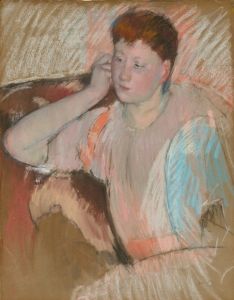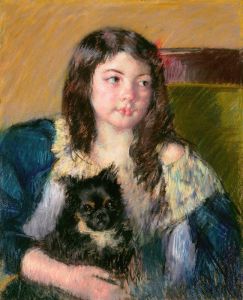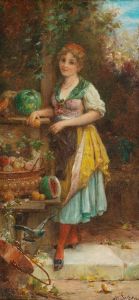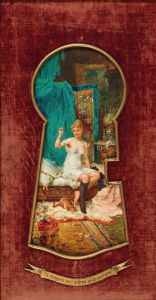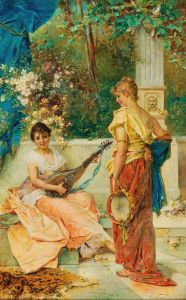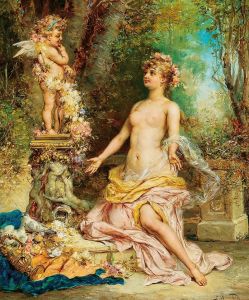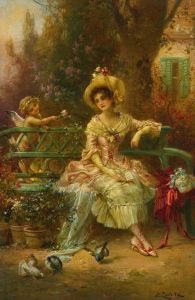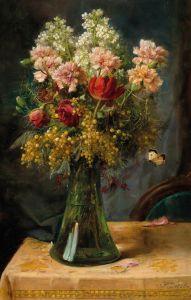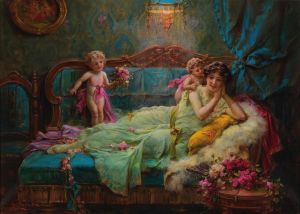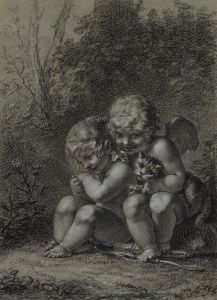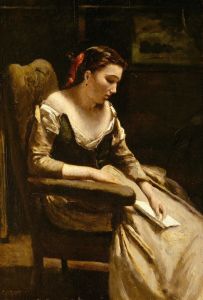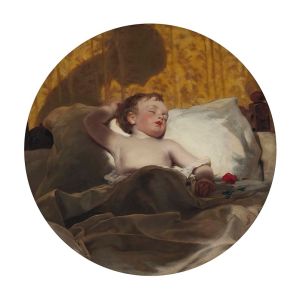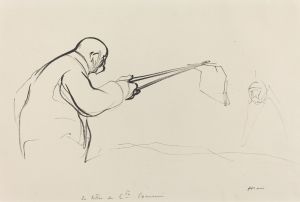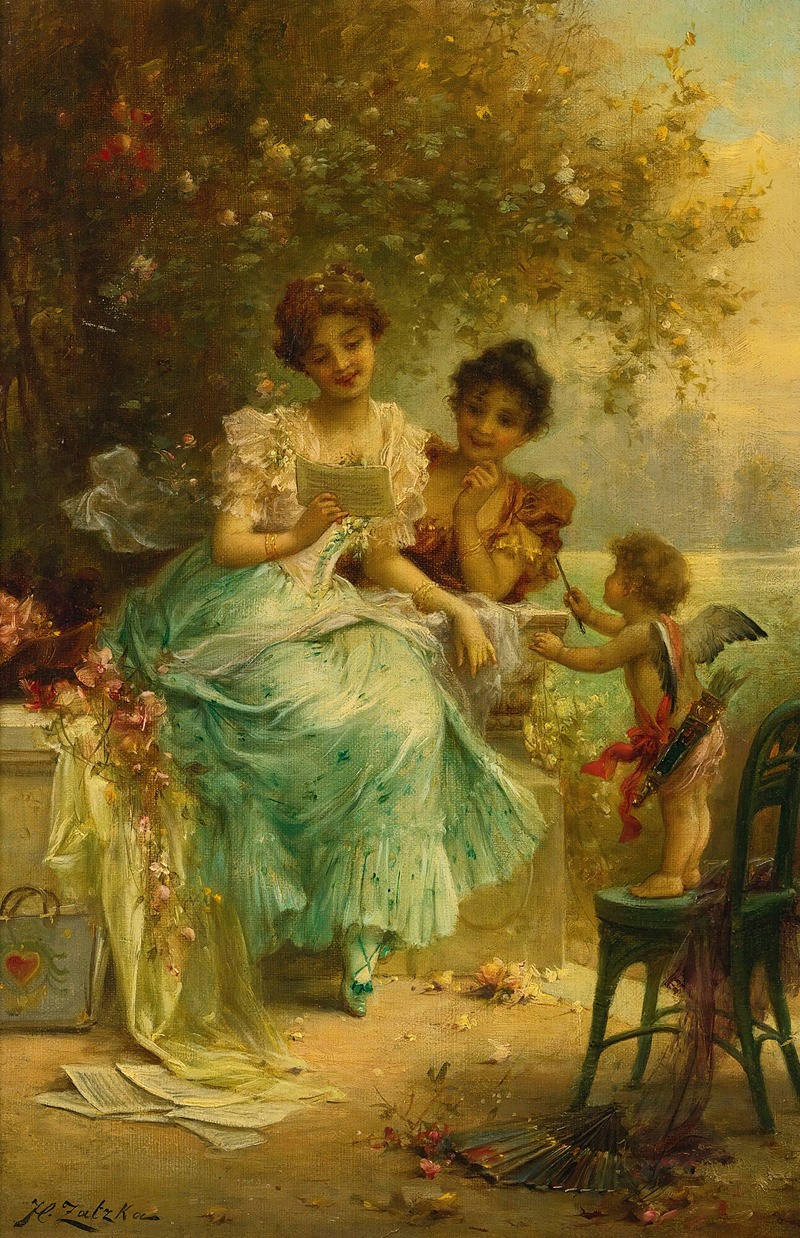
The Love Letter
A hand-painted replica of Hans Zatzka’s masterpiece The Love Letter, meticulously crafted by professional artists to capture the true essence of the original. Each piece is created with museum-quality canvas and rare mineral pigments, carefully painted by experienced artists with delicate brushstrokes and rich, layered colors to perfectly recreate the texture of the original artwork. Unlike machine-printed reproductions, this hand-painted version brings the painting to life, infused with the artist’s emotions and skill in every stroke. Whether for personal collection or home decoration, it instantly elevates the artistic atmosphere of any space.
Hans Zatzka was an Austrian painter known for his romantic and often whimsical depictions of women, cherubs, and mythological scenes. One of his notable works is "The Love Letter," which exemplifies his characteristic style and thematic focus. Zatzka was born on March 8, 1859, in Vienna, Austria, and he studied at the Academy of Fine Arts in Vienna from 1877 to 1882. His education there provided him with a strong foundation in classical techniques, which he employed throughout his career.
"The Love Letter" is a painting that captures the romantic and idealized vision that Zatzka often portrayed in his works. While specific details about the painting's creation date or its current location are not widely documented, it is consistent with Zatzka's oeuvre from the late 19th to early 20th century. The painting typically features a young woman, often in an idyllic setting, engaged in the act of reading or writing a love letter. This theme of romance and communication is a common motif in Zatzka's work, reflecting the societal fascination with love and courtship during his time.
Zatzka's paintings are characterized by their vibrant colors, attention to detail, and the use of light to create a soft, inviting atmosphere. In "The Love Letter," these elements come together to create a sense of intimacy and nostalgia. The artist's ability to capture the delicate expressions and emotions of his subjects adds depth to the seemingly simple act of reading or writing a letter, transforming it into a moment of personal significance and beauty.
Throughout his career, Zatzka often used pseudonyms such as Hans Zaber, P. Ronsard, and Bernard Zatzka, among others. This was partly due to the high demand for his work, which led him to produce a large number of paintings and prints. By using different names, he was able to sell more of his art without oversaturating the market under a single identity. His works were popular not only in Austria but also in other parts of Europe and the United States, where they were often reproduced as prints and postcards.
Zatzka's art, including "The Love Letter," is often associated with the Rococo Revival and Romanticism movements, which emphasized beauty, emotion, and a return to the ornate and decorative styles of the 18th century. His paintings frequently feature elements of fantasy and mythology, with cherubs, nymphs, and other mythical creatures making regular appearances. This blend of romantic themes and fantastical elements made his work appealing to a wide audience, and it continues to be appreciated by collectors and art enthusiasts today.
Despite the popularity of his work, Zatzka remained somewhat private, and there is limited documentation about his personal life. He passed away on December 17, 1945, in Vienna, leaving behind a legacy of art that continues to enchant viewers with its charm and romanticism. "The Love Letter," like many of his paintings, serves as a testament to his skill in capturing the timeless allure of love and beauty.





